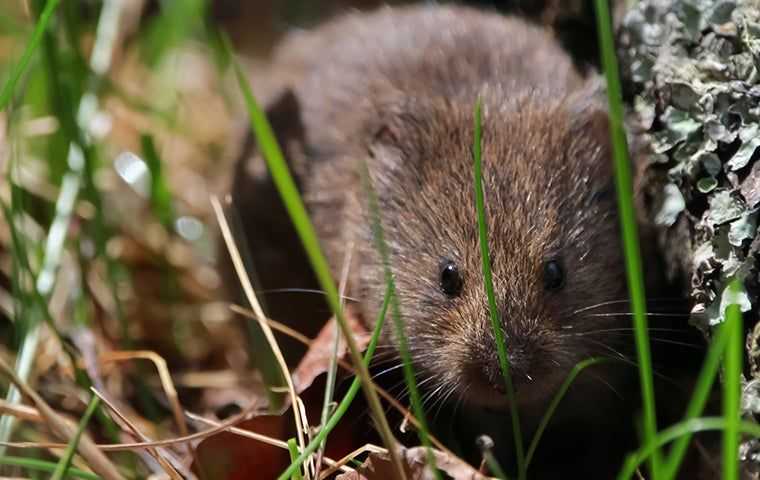Expert Methods for Vole Control and Prevention
Expert Methods for Vole Control and Prevention
Blog Article
Comprehensive Overview to Efficient Vole Bug Control: Infestation Identification and Therapy Techniques
In the realm of efficient pest control, vole invasions posture a distinct difficulty that requires a tactical technique. By discovering the subtleties of vole habits, recognizing key signs of infestation, and reviewing a range of control choices, one can establish a thorough method to combat these elusive insects.
Comprehending Vole Habits
Vole behavior is identified by their delving routines and rapid reproduction rates, making them a challenging parasite to manage efficiently. Their fast reproductive rate more makes complex control efforts, with women capable of producing numerous trashes in a single year, each including several spawn.
Voles are most energetic during the early morning and night hours, spending most of their time foraging for food. Their delving behaviors not just disturb grass and gardens yet also make them testing to detect and remove. Recognizing vole habits is important for effective bug control strategies. By determining their burrow places, keeping an eye on feeding locations, and applying targeted control techniques, such as trapping or habitat adjustment, vole problems can be managed efficiently.
Indicators of Vole Infestation

Avoidance Techniques
Applying effective prevention strategies is critical in minimizing vole invasions and guarding vegetation from their destructive feeding routines (vole control). To avoid vole problems, it is important to begin by removing potential food sources and shelter. Keep yard and vegetation trimmed short, remove weeds and debris, and preserve a clean yard or grass to make the location much less eye-catching to voles. Installing barriers such as hardware cloth or underground fence can additionally aid hinder voles from getting in details locations. Additionally, decreasing excess moisture by repairing leaky pipes and making sure appropriate drain can make the atmosphere less congenial for voles.
Regularly evaluating the residential property for indications of vole task, such as runways and tunnel openings, is critical for very early detection and punctual activity. If vole activity is suspected, think about making use of traps or repellents tactically positioned near their paths.
Non-Lethal Control Approaches
To properly take care of moved here vole populations while focusing on humane approaches, non-lethal control strategies provide useful options for reducing vole damages in landscapes and yards. One efficient approach is making use of physical obstacles such as equipment towel or cord mesh to shield vulnerable plants. These barriers can be buried at least 12 inches deep and bent at a 90-degree angle to avoid voles from delving below. In addition, environment alteration can hinder voles by reducing their preferred food resources and concealing places. Maintaining a well-mowed lawn, removing particles, and maintaining plants cut can make the setting much less attractive to voles.

Lethal Control Options
One reliable method for attending to vole problems in landscapes and gardens includes the critical use deadly control options. When confronted with a severe vole invasion that non-lethal approaches have fallen short to include, applying lethal control procedures becomes critical. One typically utilized dangerous control option is making use of breeze traps. These traps are created to promptly and humanely kill voles upon activation, making them a popular option for several garden enthusiasts and landscapers. To enhance the efficiency of breeze traps, it is recommended to put them in areas where vole task is high, such as along runways or near burrow entryways. One more deadly control alternative is the utilization of hazardous lures specifically formulated to target voles. These baits include toxin that is consumed by the voles, bring about their ultimate death. Care must be exercised when utilizing toxic baits to protect against harm to non-target animals or pets. Overall, when employing dangerous control choices, it is necessary to do so responsibly and in accordance with neighborhood laws to effectively manage vole infestations.
Final Thought
In final thought, effective vole bug control requires a thorough understanding of vole habits, identification of indicators of invasion, execution of prevention approaches, and usage of both lethal and non-lethal control methods. By incorporating these approaches, individuals can successfully take care of vole populations and safeguard their building from damages. It is vital to resolve vole infestations quickly to stop further concerns and reduce the influence on the surrounding environment.
Given the elaborate passage systems and rapid recreation rates particular of voles, identifying the indications of vole invasion comes to be essential in reliable pest control. One of the primary signs of vole existence is the visibility of surface runways or tracks in yard or snow, generally regarding 1-2 inches vast, created as voles travel in between their burrows and food resources.To successfully take care of vole populations while focusing on gentle approaches, non-lethal control her explanation strategies offer functional solutions for decreasing vole damage in landscapes and gardens.One efficient approach for dealing with vole invasions in gardens and landscapes involves the tactical usage of deadly control choices. vole pest control.In conclusion, efficient vole insect control requires a comprehensive understanding of vole habits, recognition of indications of infestation, implementation of prevention methods, and application of both non-lethal and dangerous control techniques
Report this page